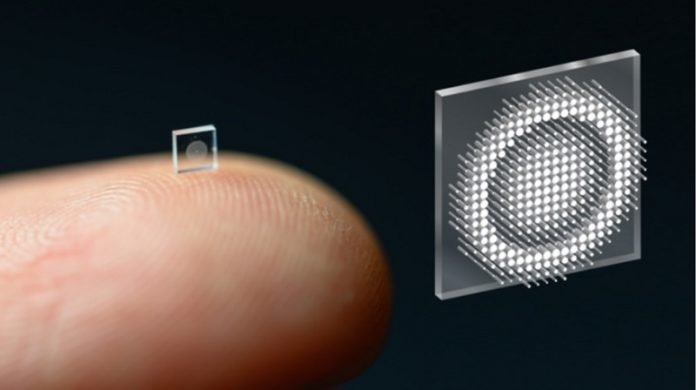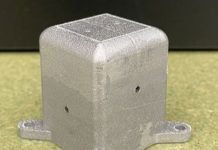
Researchers have developed an ultracompact camera the size of a coarse grain of salt.
The system relies on a technology called a metasurface, which is studded with 1.6 million cylindrical posts and can be produced much like a computer chip.
Micro-sized cameras have great potential to spot problems in the human body and enable sensing for super-small robots, but past approaches captured fuzzy, distorted images with limited fields of view.
Now, researchers at Princeton University and the University of Washington have overcome these obstacles with an ultracompact camera the size of a coarse grain of salt.
The new system can produce crisp, full-color images on par with a conventional compound camera lens 500,000 times larger in volume, the researchers reported in a paper published in Nature Communications.
Enabled by a joint design of the camera’s hardware and computational processing, the system could enable minimally invasive endoscopy with medical robots to diagnose and treat diseases, and improve imaging for other robots with size and weight constraints.
Arrays of thousands of such cameras could be used for full-scene sensing, turning surfaces into cameras.
While a traditional camera uses a series of curved glass or plastic lenses to bend light rays into focus, the new optical system relies on a technology called a metasurface, which can be produced much like a computer chip. Just half a millimeter wide, the metasurface is studded with 1.6 million cylindrical posts, each roughly the size of the human immunodeficiency virus (HIV).
Each post has a unique geometry, and functions like an optical antenna. Varying the design of each post is necessary to correctly shape the entire optical wavefront.
With the help of machine learning-based algorithms, the posts’ interactions with light combine to produce the highest-quality images and widest field of view for a full-color metasurface camera developed to date.
A key innovation in the camera’s creation was the integrated design of the optical surface and the signal processing algorithms that produce the image.
This boosted the camera’s performance in natural light conditions, in contrast to previous metasurface cameras that required the pure laser light of a laboratory or other ideal conditions to produce high-quality images, said Felix Heide, the study’s senior author and an assistant professor of computer science at Princeton.
The researchers compared images produced with their system to the results of previous metasurface cameras, as well as images captured by a conventional compound optic that uses a series of six refractive lenses.
Aside from a bit of blurring at the edges of the frame, the nano-sized camera’s images were comparable to those of the traditional lens setup, which is more than 500,000 times larger in volume.
Other ultracompact metasurface lenses have suffered from major image distortions, small fields of view, and limited ability to capture the full spectrum of visible light — referred to as RGB imaging because it combines red, green and blue to produce different hues.
Besides Tseng, Colburn, Whitehead, Majumdar and Heide, the study’s authors include Luocheng Huang, a Ph.D. student at the University of Washington; and Seung-Hwan Baek, a postdoctoral research associate at Princeton.
The work was supported in part by the National Science Foundation, the U.S. Department of Defense, the UW Reality Lab, Facebook, Google, Futurewei Technologies, and Amazon.
Written by Molly Sharlach.



